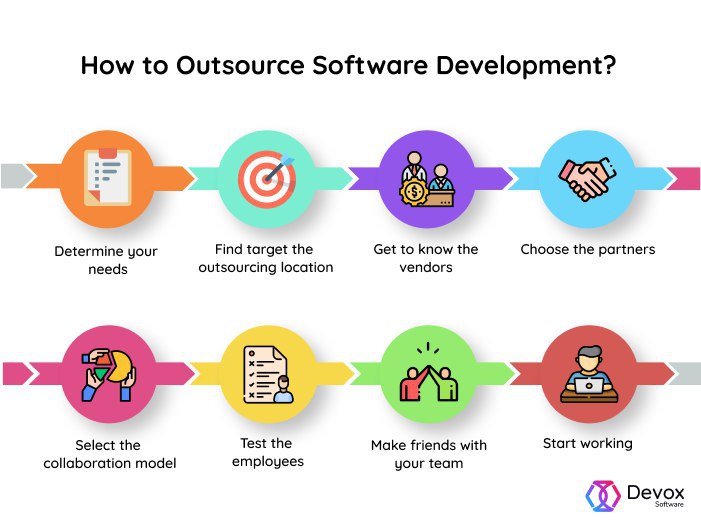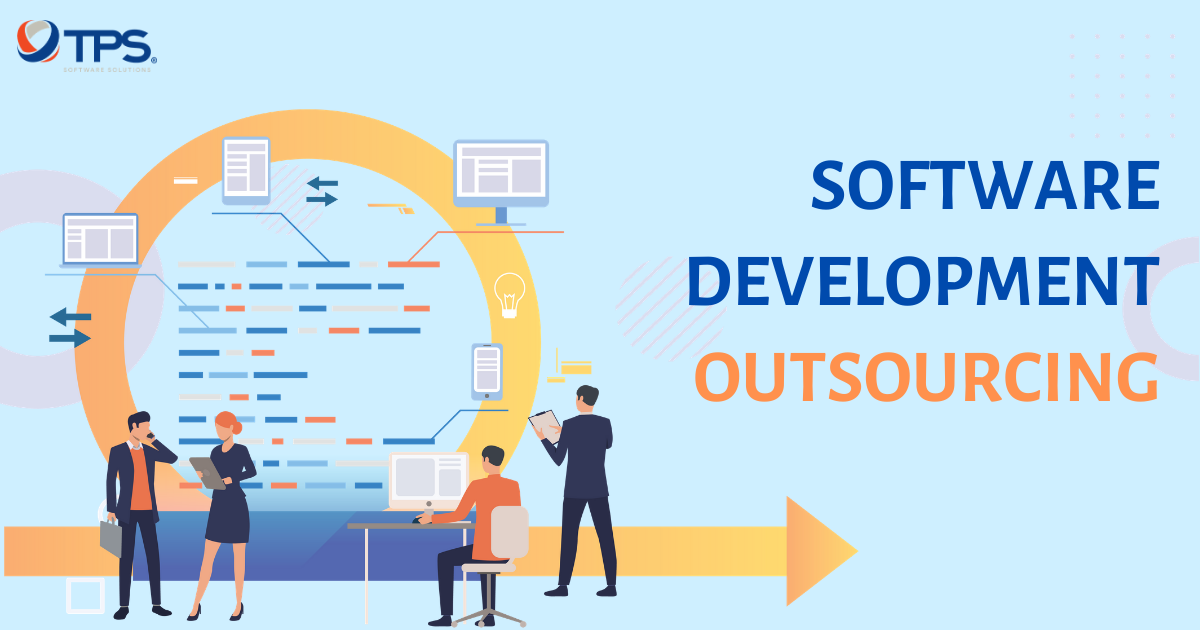Outsourcing software development opens up a world of possibilities for businesses looking to streamline operations and drive innovation. From cost-effectiveness to improved scalability, the benefits are endless. Let’s delve deeper into this transformative practice.
When it comes to developing software, many companies face the decision of whether to handle it in-house or outsource it to external partners. This choice can greatly impact the overall success and efficiency of a project.
Importance of Outsourcing Software Development
Outsourcing software development has become a popular choice for many companies due to the various benefits it offers. Let’s explore why outsourcing software development is important and how it can be advantageous for businesses.
Outsourcing software development allows companies to access a global talent pool with diverse skill sets and expertise. This means that businesses can work with experienced professionals who specialize in different technologies, resulting in high-quality software solutions.
When comparing in-house development to outsourcing, cost-effectiveness is a key factor to consider. Outsourcing software development can often be more cost-effective as it eliminates the need to hire and train new employees, invest in infrastructure, and manage additional overhead costs. This can result in significant cost savings for businesses in the long run.
Many successful companies have leveraged outsourcing to achieve their software development goals. For example, companies like Google, Alibaba, and WhatsApp have all outsourced certain aspects of their software development to external vendors. This strategic decision has allowed them to focus on their core business activities while benefiting from the expertise and efficiency of external software development teams.
Benefits of Outsourcing Software Development
- Access to a global talent pool with diverse expertise
- Cost-effectiveness through reduced overhead costs
- Focus on core business activities
- Increased efficiency and faster time-to-market
- Ability to scale resources based on project requirements
Factors to Consider Before Outsourcing

Before deciding to outsource software development, there are several essential factors to consider to ensure a successful partnership and project delivery.
Criteria for Selecting the Right Outsourcing Partner:
- Experience and Expertise: Look for a partner with a proven track record in software development and relevant industry experience.
- Quality and Compliance: Ensure the outsourcing partner follows quality standards, certifications, and compliance requirements.
- Communication and Transparency: Effective communication and transparency are crucial for project success. Choose a partner with clear communication channels and reporting mechanisms.
- Cost and Budget: Evaluate the cost structure and ensure it aligns with your budget while maintaining quality standards.
- Scalability and Flexibility: Consider the partner’s ability to scale resources as needed and adapt to changing project requirements.
Importance of Cultural Fit and Communication in Outsourcing Partnerships:
Effective communication and cultural fit play a significant role in the success of outsourcing partnerships.
- Cultural Fit: Ensure the outsourcing partner’s values, work culture, and communication style align with your organization’s culture to foster collaboration and understanding.
- Communication: Establish clear communication channels, regular updates, and feedback mechanisms to ensure transparency, alignment on project goals, and timely issue resolution.
- Language Proficiency: Consider language proficiency to avoid miscommunication and ensure smooth collaboration between teams.
Best Practices in Outsourcing Software Development
Outsourcing software development can be a strategic move for many companies looking to leverage external expertise and resources. However, to ensure the success of outsourced projects, it is essential to follow best practices that help in managing remote development teams effectively, ensuring quality and timely delivery, and overcoming common challenges.
Managing Remote Development Teams
- Establish clear communication channels: Utilize project management tools, scheduling regular meetings, and setting up communication protocols to ensure smooth collaboration.
- Define project goals and expectations: Clearly Artikel project requirements, deliverables, timelines, and quality standards to align the remote team with the project objectives.
- Provide necessary resources and support: Ensure that the remote team has access to the required software, hardware, and resources to perform their tasks efficiently.
- Monitor progress and performance: Regularly track the progress of the project, evaluate team performance, and address any issues or bottlenecks promptly.
Ensuring Quality and Timely Delivery
- Set up a robust quality assurance process: Define testing procedures, conduct code reviews, and implement quality control measures to maintain the quality of the software.
- Establish milestones and checkpoints: Break down the project into manageable milestones with clear deadlines to ensure timely delivery and track progress effectively.
- Implement agile methodologies: Adopt agile practices like Scrum or Kanban to facilitate iterative development, improve collaboration, and respond to changes swiftly.
Overcoming Common Challenges in Outsourced Projects
- Cultural differences: Understand and respect the cultural nuances of the remote team to foster better communication and collaboration.
- Time zone differences: Coordinate overlapping working hours, leverage asynchronous communication, and plan meetings strategically to overcome time zone challenges.
- Legal and security concerns: Address data security and compliance issues by signing appropriate legal agreements, implementing secure processes, and conducting regular audits.
Types of Outsourcing Models: Outsourcing Software Development

Outsourcing software development can take various forms, each with its own set of advantages and challenges. Let’s explore the different types of outsourcing models to understand which one might be the best fit for your organization.
Offshore, Nearshore, and Onshore Outsourcing Models
- Offshore Outsourcing: This model involves hiring a third-party company located in a different country, often in a different time zone. It is typically chosen for cost savings and access to a larger talent pool.
- Nearshore Outsourcing: Nearshore outsourcing involves partnering with a company in a neighboring country or region. This model offers cultural proximity, easier communication, and some cost savings compared to onshore outsourcing.
- Onshore Outsourcing: Onshore outsourcing involves working with a third-party company within the same country. While it may be more expensive, it offers benefits like easier communication, similar time zones, and regulatory compliance.
Dedicated Teams, Project-Based, and Staff Augmentation Outsourcing Models
- Dedicated Teams: In this model, a dedicated team of professionals is assigned to work exclusively on your project. This offers better control and flexibility in managing resources.
- Project-Based Outsourcing: Project-based outsourcing involves outsourcing specific projects or tasks to a third-party provider. This model is cost-effective and allows for scalability based on project requirements.
- Staff Augmentation: Staff augmentation involves supplementing your in-house team with external resources on a temporary basis. This model is ideal for companies looking to quickly scale their workforce for specific projects.
Industries that Benefit Most from Each Outsourcing Model, Outsourcing software development
- Offshore Outsourcing: Industries like technology, finance, and healthcare benefit from offshore outsourcing due to cost savings and access to specialized skills.
- Nearshore Outsourcing: Industries that require frequent collaboration and communication, such as marketing and design, benefit from nearshore outsourcing.
- Onshore Outsourcing: Highly regulated industries like government and legal services prefer onshore outsourcing to ensure compliance and data security.
Summary

In conclusion, outsourcing software development can be a game-changer for businesses seeking to stay ahead in a competitive market. By carefully considering key factors and implementing best practices, companies can leverage the power of outsourcing to drive growth and innovation.
FAQ Overview
What are the key benefits of outsourcing software development?
Outsourcing software development can lead to cost savings, access to specialized expertise, increased efficiency, and faster time-to-market.
How do you choose the right outsourcing partner?
When selecting an outsourcing partner, consider factors like experience, quality of work, communication skills, and cultural fit to ensure a successful collaboration.
What are the common challenges in outsourced projects?
Challenges in outsourced projects often revolve around communication barriers, differences in time zones, quality control issues, and ensuring project alignment with business goals.
